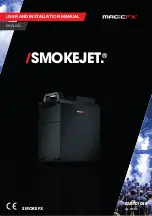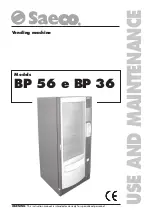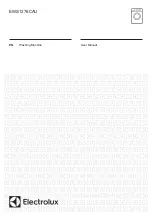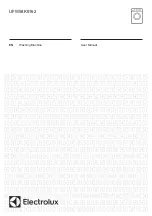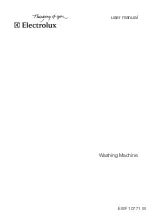
APPENDIX
————————————————————————————————————————————————————————————————————————————
222
2. Cut-away stabilizer is excellent for medium- to
heavyweight knits, however it can also be used
on woven material. It will hold a large number
of stitches and with two or three layers can hold
a tremendous amount of stitches. This type of
backing is also available in black for those who
want the inside of their garments to look as
good as the outside. Black stabilizer is very
useful on similarly colored garments of
lightweight fabrics. The black backing is less
likely to show through as compared to white
backing.
3. Self-adhesive (peel-and-stick) backing is used
on those difficult-to-hoop fabrics. This backing
is applied (with sticky side up) to the underside
of the frame, enabling your fabric to “stick on”
the exposed surface in the embroidery area.
When the embroidery is finished, the fabric can
be removed, the excess backing can be
disposed of and the process repeated.
4. Tear-away stabilizer can be used on
mediumweight woven fabrics and sturdy fabrics
such as canvas, poplin and denim. This
stabilizer will hold many stitches especially
when used in two or more layers. This type of
stabilizer is made of a non-woven material that
enables it to easily be torn away from the edges
of your embroidery design when it is
completed. This stabilizer is also available in
black.
5. Water-soluble stabilizer is useful when you
need to keep the nap or pile, for example, on
towels, from interfering with the placement of
stitches. Fabrics such as terry cloth, corduroy,
velvet and faux fur are examples of materials
that have a nap or pile that can actually
penetrate embroidery stitches as your machine
sews. The result is an unfinished and often
sloppy appearance when fibers of the fabric
poke out between the finished stitches of an
embroidery design. In these situations, water-
soluble stabilizer is used as a topping to hold
the fibers of the fabric flat so the stitches can be
placed on top neatly and accurately. Water-
soluble stabilizer is also used as a backing
when stitching lace or other motifs where the
desired result is only the stitching. This is
accomplished with water-soluble stabilizer,
which can easily be pulled off of the fabric after
embroidering is completed and any remnants
can easily be dissolved with water. Water-
soluble stabilizer is also used as a backing on
towels, where you often need some
stabilization, but any remnants of a formal
backing must not be visible in the finished
product.
Hooping techniques
“Use the right tool for the right job” is a statement
many of us have heard throughout the years. This
statement holds true even in the embroidery
industry. The wrong size or type of embroidery
frame may result in poor design alignment during
sewing or damage the product altogether. You can
take a perfectly created design and ruin the final
results by simply not using the correct frame size,
type or technique designed for its application.
■
Frame Basics
Tubular frames:
This type of frame allows
tubular fabric or pre-assembled garments to be
placed around the hook assembly. It allows
embroidering of the front of a garment without
stitching through the back of it.
Cap frames:
These are specialized embroidery
frames (hoops) designed to hold caps for
embroidering. They are available in a variety of
styles for various machines, with two basic
styles: one that allows sewing a flattened cap
(for use on a flat machine) or one that allows
sewing the cap in its natural curved shape (for
use on a tubular machine).
Hooping fabric:
The framed fabric and backing
should be perfectly flat and free of wrinkles or
bubbles. If there are bubbles or wrinkles that
must be removed, be sure that you pull on the
fabric and backing together. Pull no more than is
necessary to make the fabric flat and smooth.
Overstretching the fabric during this process
may cause puckers around the finished design
when the frame is removed. Gaps may also be
generated between design parts.
Inner/outer frame positioning:
There should be
a slight ridge (3 mm (1/8 inch)) of fabric and
backing below the outer frame on the back side.
Tighten the screw only if the inner frame feels
loose. Avoid overtightening the screw as this
will cause puckers in the fabric and may “strip”
the screw.
Summary of Contents for ADDENDUM 884-T07
Page 1: ...Operation Manual Embroidery Machine Product Code 884 T07 884 T07 ...
Page 20: ... 18 ...
Page 136: ...EMBROIDERING SETTINGS 134 ...
Page 194: ...SELECTING EDITING SAVING PATTERNS 192 ...
Page 270: ...APPENDIX 268 ...
Page 278: ......
Page 279: ......

































